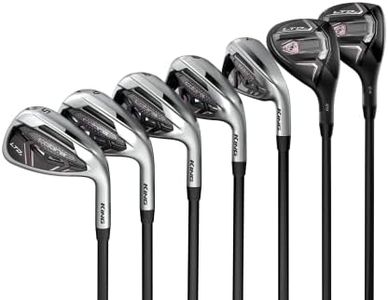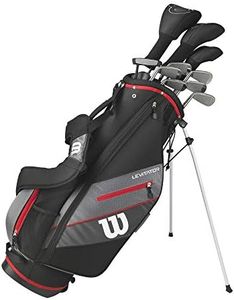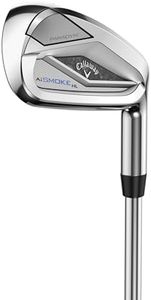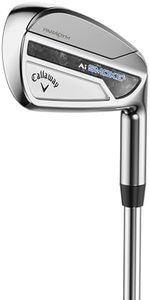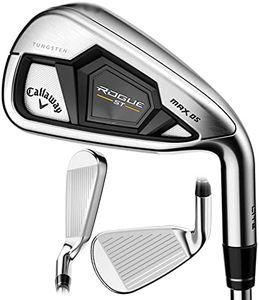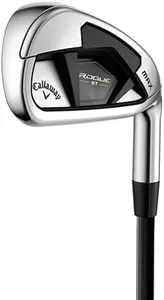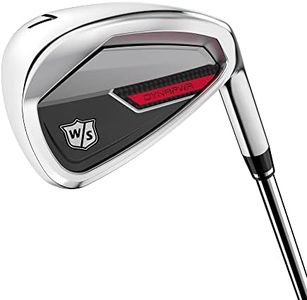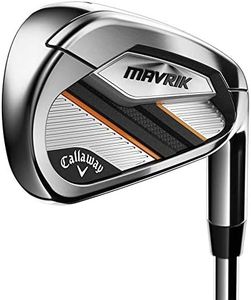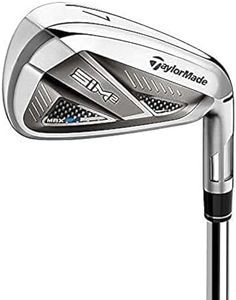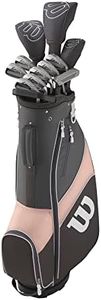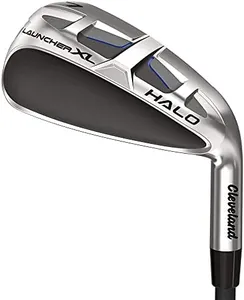We Use CookiesWe use cookies to enhance the security, performance,
functionality and for analytical and promotional activities. By continuing to browse this site you
are agreeing to our privacy policy
10 Best Golf Irons
From leading brands and best sellers available on the web.By clicking on a link to a third party's website, log data is shared with that third party.
Buying Guide for the Best Golf Irons
Choosing the right golf irons can have a big impact on your performance and enjoyment of the game. The best irons for you will suit your skill level, the type of shots you want to play, and your personal comfort. It's important to think about not just the look and feel of the club, but also the design material and technology built into it. Testing out different types and paying attention to how each one affects your distance, accuracy, and control will help you make the best decision for your game.Club Head DesignThe design of the club head impacts forgiveness, control, and distance. Irons generally come in three main head types: blades, cavity backs, and game improvement irons. Blades have a thin, flat design and are used by skilled golfers who want precise control, but they're less forgiving. Cavity backs have a hollowed-out back, making them more forgiving on off-center hits and suitable for a wider range of golfers. Game improvement irons have even more forgiving designs with larger club faces for maximum help if your swing is less consistent. If you're newer to golf or prioritize forgiveness, start with irons labeled as cavity back or game improvement. If you are more advanced and seek precision, blades might be more appealing.
Shaft MaterialIron shafts are usually made from either steel or graphite. Steel shafts are heavier, offering more control and a better 'feel' of the club head, which many traditional golfers prefer. Graphite is lighter, making it easier to swing faster and can result in more distance with less effort, especially beneficial for those with slower swing speeds or less strength. To choose the right one, consider your swing speed, physical strength, and preference for feel versus distance. Beginners and those looking for more swing speed might prefer graphite, whereas players seeking control might stick with steel.
Shaft FlexThe flex of the shaft refers to how much it bends during your swing. Common flex options include extra stiff, stiff, regular, senior, and ladies. Stiffer shafts are suited to players with faster, stronger swings, providing them with more accuracy. Softer shafts help players with slower swings generate more distance. To find your ideal flex, think about how fast you typically swing and what feels most comfortable during a test swing. Most golfers will fit into the regular or stiff categories, but always try out options if you're unsure.
Set Makeup (Number of Irons Included)Iron sets can range from just a few clubs (like 6-iron through pitching wedge) to a full set from 3-iron to sand wedge. More clubs in the set give you a wider spread of distances to choose from, helping you make more precise choices on the course. If you are a beginner or casual player, you may not need a full set; a smaller set with easier-to-hit irons is often enough. More advanced golfers who want fine-tuned distance control and versatility may prefer a complete set.
Lie AngleThe lie angle is the angle between the shaft and the ground when the iron is properly soled. A lie angle that matches your golf posture ensures cleaner turf contact and straighter ball flights. If the lie angle is too upright or too flat, your shots may veer left or right consistently. Most standard sets are made for average heights, but if you are much taller or shorter than average, consider getting fitted for the right lie angle. Proper fitting here helps maximize accuracy.
ForgivenessForgiveness is about how well an iron can correct for mishits or imperfect swings. More forgiving irons usually have larger club faces and weight distributed around the perimeter to help shots go straighter even if you don't hit the exact center. If you're a new golfer or tend to miss the sweet spot, prioritize irons known for their forgiveness. Experienced players might prioritize workability and control instead.
OffsetOffset refers to how far the leading edge of the clubface is set back from the shaft. More offset helps square the clubface at impact and can reduce slicing (curving right), making it helpful for beginners or golfers who struggle with a slice. Irons with less offset allow skilled players to shape shots more easily. Your choice will depend on whether you want help correcting your shot or more control in ball shaping.
